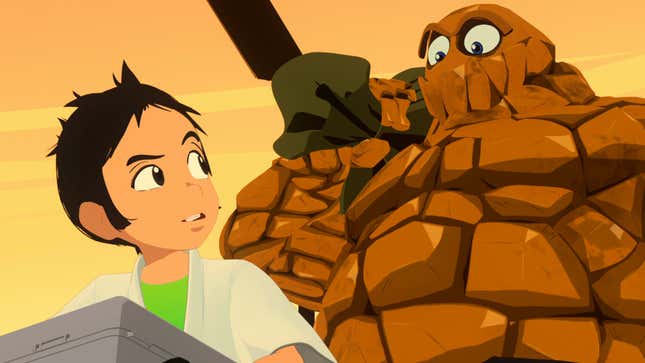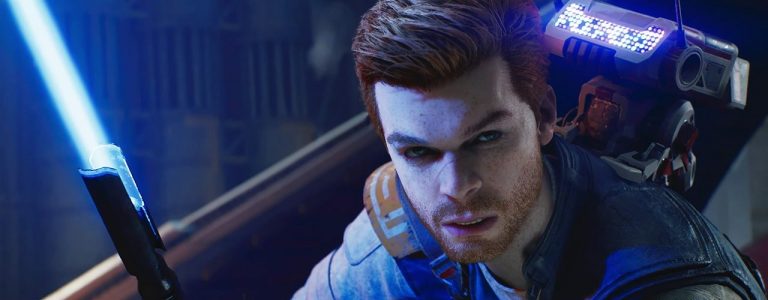FLCL, otherwise known as Fooly Cooly, is uniquely a product of the early 2000s, something that comes through in its provocative art direction, its hectic action sequences, and its unforgettable alternative rock soundtrack. It’s also a cult classic, known for its disorienting fever-dream-esque story which fans like me have spent years struggling to fully recollect let alone comprehend. Attempting to make sense of the show’s jigsaw puzzle of a plot would yuck the yum of its angst-filled teenage vibe; after all, FLCL’s surreal quality is part of its charm.
However, the series’ efforts to recork its own lightning with follow-up seasons like 2018’s forgettable FLCL: Progressive and the so-so FLCL: Alternative never quite succeeded. As a result, some fans turned their noses up at FLCL: Grunge when it proclaimed that it would not only give the series yet another unasked-for season but serve as a prequel to the consecrated tale that started it all.
Read More: Every Big Anime Announcement At San Diego Comic-Con
While I could have begrudgingly accepted FLCL: Grunge’s existence as a means of listening to new tracks from The Pillows before telling the series to take a hike, the premiere episode, coming to Adult Swim on August 9, manages to stick its foot in the door with a potentially compelling hook. It sets out to do more than just retread the pathos of the original anime: it also seeks to answer longtime series questions like, “Who the hell is Haruko Haruhara, and why is she desperately searching for the equally mysterious robot, Atomsk?
FLCL: Grunge follows Shinpachi, a teenager who listlessly works at his father’s sushi restaurant. That is, until his chance encounter with Haruko, the series’ unhinged alien iconoclast, who is disguised as a call girl for the sleepy seaside town’s lecherous Mayor Kuroiwa. After some off-kilter hijinks, which culminate in Haruko planting a kiss on Shinpachi, the sushi delivery boy develops a lump on his forehead, much like series protag Naota Nandaba. Similarly to Naota, Shin’s bump grows larger whenever Haruko bats her eyelashes or poses provocatively in front of him. It’s a thinly veiled dick metaphor in case that wasn’t clear.
While the episode doesn’t reveal whether Shin’s forehead knob spouts a dimensional portal for Haruko to pull robots out of like Naota’s does, the premiere does leave bread crumbs about how her meddling with the robots of mysterious corporation Medical Mechanica may have kickstarted the virus that corrupted the shady industrial factory’s automatons, something that was hinted at in Progressive. Haruko’s grand motivations are still unknown at the end of the premiere, but FLCL: Grunge being a prequel season leads me to believe the series will attempt to finally shed some light on her goals.

FLCL: Grunge’s animation is fine but its story is too derivative to call it a must-watch
Despite FLCL’s shift from studios Gainax (Neon Genesis Evangelion) and Production I.G (Ghost in the Shell) to new blood studio MonteBlanc Pictures, Grunge’s CGI animation—which sprinkles in bits of 2D animation to emphasize the series’ titular psycho-sexual conceits and phallic innuendos—never feels jarring or displeasing to watch, even if it’s a noticeable step down from the original series’ wildly frenetic hand-drawn animations. Although Grunge’s CGI animation never hits the peaks of anime like Trigun: Stampede, it also doesn’t sink to the embarrassingly shoddy levels of EX-Arm. The same can’t be said for its overly familiar story beats.
Read More: FLCL: Progressive’s Premiere Is Good, But Tame
Ultimately, FLCL: Grunge appears to pursue the same pathos as its predecessors: It is a series about the cynicism and melancholy that teenagers endure while inheriting problems from adults who’d rather leave the planet in droves than confront their festering issues, be they personal struggles like alcoholism or global failures like pollution from the Medical Mechanica’s environmental waste. The show’s themes would have been poignant if it hadn’t been the series’ fourth time treading them, a fact which ultimately makes Grunge’s premiere leagues weaker than its predecessors, save for the promise that it might provide some insight on Haruko’s endgame. Whether or not the show inevitably does provide some clarity on Haruko, its efforts might be moot if its next couple of episodes continue to drag their feet behind the well-trodden story beats of Grunge’s predecessors.
























